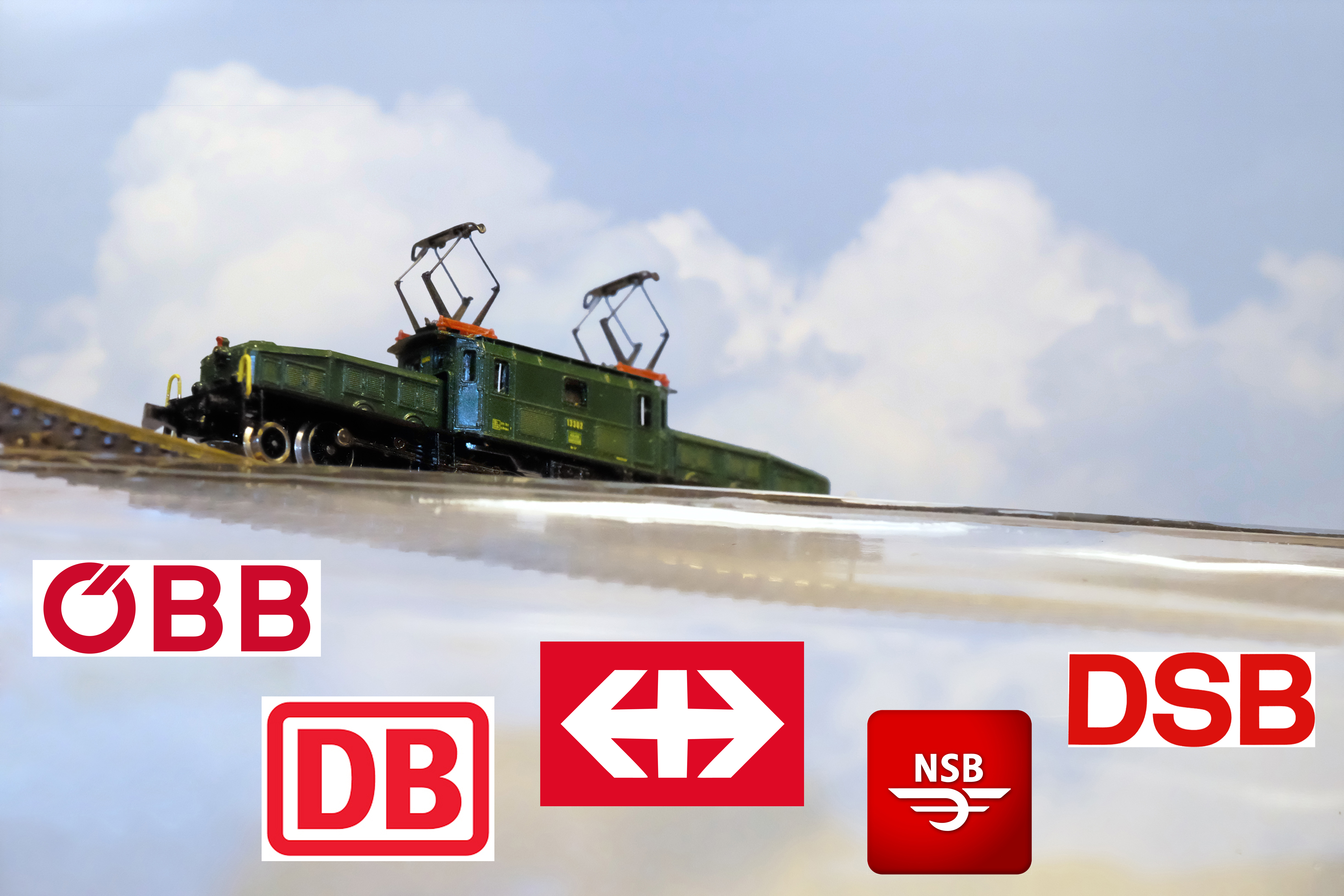
photo: Denver North West & Pacific Railroad rotary snowplow
The Rotary Snowplow was introduced to the mini-club audience in 2001 with the MHI/Insider release of 81360. An Era III BR 50 steam locomotive and rotary snowplow each included their own tenders thus making the 81360 a German Federal Railroad (DB) maintenance of way train set.

Marklin 81360 snowplow train set
Features of the Rotary Snowplow and loco set includes a separate motor to power the snowplow, it too features hinged tender hatches and a pair of hinged doors for the rotary cutting wheel. Both the loco and snowplow were also installed with the newly designed 5 pole motor which was the standard motor at this time and still is today, but new coreless motors are making their way into new tooled and designed locos more on this at a later time. Coupling the plows tender to the loco is a unique coupler that allows easy uncoupling for storage thus not a permanent coupling. Care needs to be taken to ensure this part does not break, but gentle pressure is all that is needed for this task and the part will live on for many many years.
Rotary snowplows for rail maintenance differ little through history either here in the USA or Europe. A Canadian dentist (J.W.Elliot- 1869) in the 19th century is credited with the idea for the rotary snowplow, up to that time locos pushed wedge shaped plows to clear snow which required multiple locos who’s combined power were needed for heavy snowfalls and drifts. The rotary snowplow cuts through the snow leaving walls on both sides of the track thus limiting the use of wedge shaped plows as an alternative during a winter season. In late 19th century Germany snow removal was performed by wedge shaped plows mounted to heavily ballasted tenders which have been modeled proficiently by Railex in brass.


Railex: K.BAY.STS.B. ballasted tender snowplow
Snow processed by a steam powered rotary snowplow was directed to a vertical chute directly behind the cutting blades which has been successfully modeled by Marklin in their snowplows.
I grew up with a train set in HO, one car I owned was a rotary snow plow that fascinated me, but it was seldom run due to poor performance. The body of the car was satisfactory to a 10 year old but the movement of the cutting wheel was generated by a rubber band linking the cutting wheel to the wheel sets on the car, needless to say it did not work well. Marklin powered their rotary snowplows with their own motors giving this interesting train set authentic appeal. And of course the detailing! Another precision model from Marklin in Z.
So far Marklin has released three Z snowplow and loco sets with variations in railroads and eras, but also tender types, loco types and paint and lettering schemes.
photos: 81360- Bauart Henschel Rotary Snowplow with BR 50 steam locomotive lettered for German Federal Railroad (DB) Era III. One Time Series for MHI/Insider Club 2001.






photos: 81361- Bauart Henschel Rotary Snowplow with BR 41 steam locomotive lettered for Deutsche Reichsbahn-Gesellschaft (DRG – German Imperial Railway Company) Era II. Released 2004.






photos: 81362- Bauart Henschel Rotary Snowplow with BR 39 steam locomotive lettered for German Federal Railroad (DB) Era III. Released 2012 for MHI Program.






For those interested in an extended look at snow removal in Z check out a past post on FR’s two releases for the SJ. In the meantime have a look at these beauties in metal with coreless motors.

FR: 46.135.11

FR: 46.135.21





























































